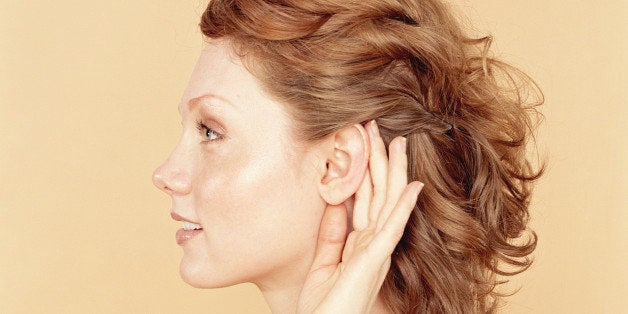
Learning to have an attractive communication is one of the easiest, fastest, yet most powerful ways of improving your relationships with others. Attractive listening is one important element of attractive communication. Most people think that we listen with our ears. However, in order to become a more attractive and effective listener, it is actually important that we use 7 parts of the body as follows:
1) Use your ears. However, in order to enhance your hearing, it is best not to interrupt. After all, it is difficult to hear others if you are constantly interrupting. Moreover, do not try to finish the sentences of the people communicating with you. Let them finish their own sentences. It is no secret! If you wait a few seconds or minutes, they will tell you what they are trying to tell you. Furthermore, do not try to rush the communication of others. If it seems like you are in a hurry to end the conversation, they may feel unimportant. In addition, listen for tone. For example, try to hear if the words you are hearing are being communicated with a happy tone, sad tone, excited tone, etc.
2) Use your eyes. Carefully look with your eyes for non-verbal messages. If you do not make a point to observe non-verbal messages, it may be difficult to put words into proper context. For example, if you ask your loved one about his or her day and the verbal response is "fine" but there is sadness in his or her face, you will be able to observe the sadness using your eyes. Also, use your eyes to establish and maintain eye contact. The use of eye contact is a powerful way to show that you are paying attention and that you care.
3) Use your brain. Understand the what, when, where, how, and why of the communication content. Pay special attention to phrases such as " I am interested in" or "I would like" or "I need you to" or "it is important that" or "my issue is" or "the problem is" or "this is when" or "this is where" or "this is how" or "the reason is." Avoid multi-tasking. Multi-tasking has become a communicative epidemic. Avoid doing anything other than listening while others are talking to you. For example, while listening, do not type away on your computer, do not play with your mobile phone, do not watch television, do not work, etc. Give others your complete mental focus and concentration. Your brain must be tuned in completely and without interference or interruption. Moreover, as you listen, avoid thinking about your own responses, refrain from thinking about matters unrelated to what is being communicated to you, do not get defensive, and do not make judgments.
4) Use your heart. Feel and care while you listen. People have emotions. Your ears can hear information; your eyes can pick up non-verbal communication; your brain can process information; etc. However, it is in your heart that you truly feel what others are feeling. Try to put yourself "in the shoes of others" and feel things from their emotional vantage point.
5) Use your mouth. Communicate words of interest to show that you are interested in listening. For example, you could say "I'm happy to listen to you" or "I like it when you talk to me" or "I am interested in hearing and understanding you." Communicate what I refer to as "positive flow responses" that keep the conversation flowing. For example, you could say "I see" or "oh wow" or "tell me more." If the communication is going too fast, respectfully ask others to slow down. If you have questions, seek clarification. When others finish making their points or making their requests, communicate your understanding of what is being communicated to you. Acknowledge their feelings. Make them feel heard, understood and cared for.
6) Use your hands. Using your hands to take notes is a powerful way to show others that you are paying attention and that you consider what they are saying to be important and noteworthy. As between couples, holding hands while listening can create connectivity and intimacy.
7) Use your neck. Using your neck to nod your head serves to acknowledge others and to show others that you are participating in the listening process. Using your neck to lean in while listening also serves to demonstrate your attentiveness.